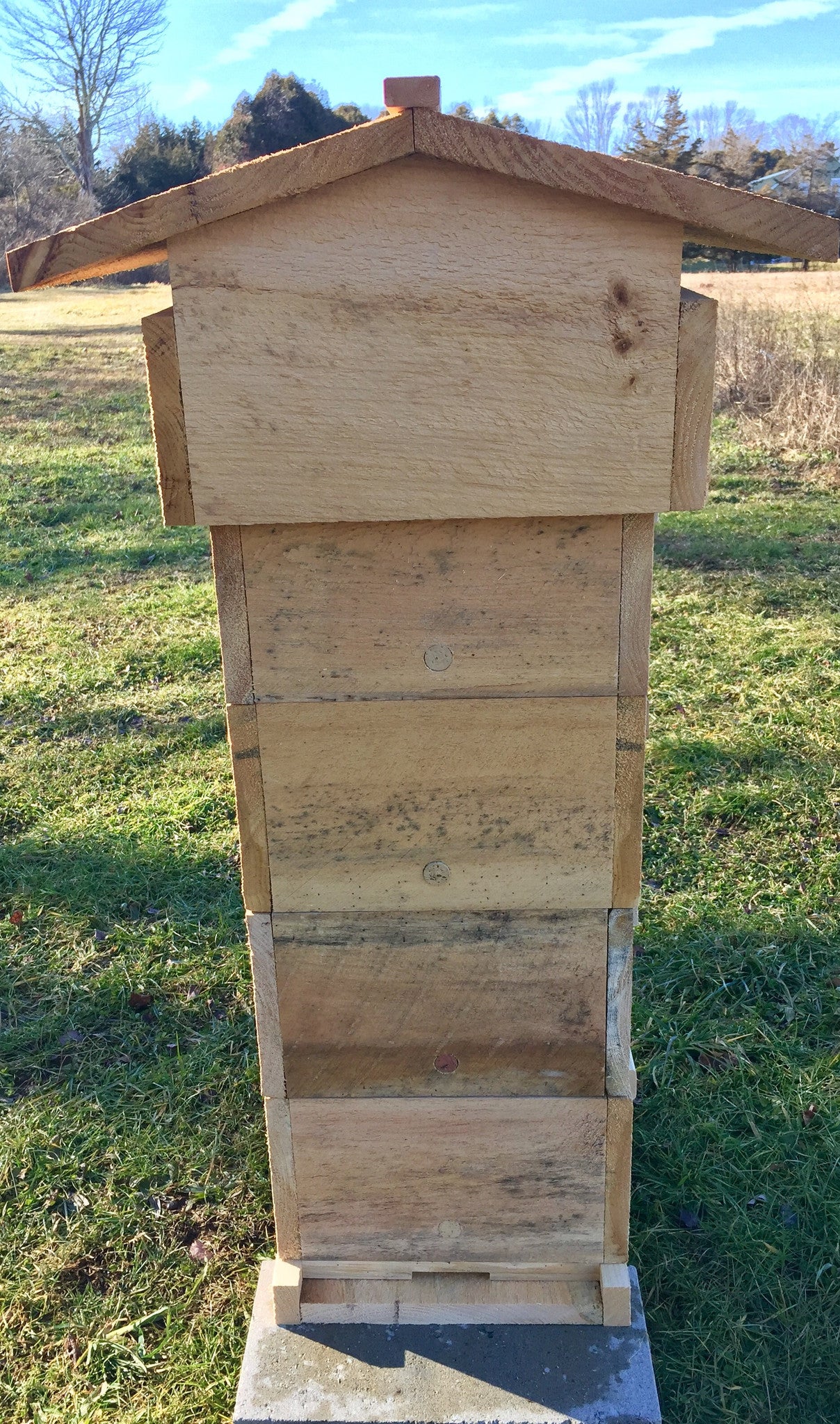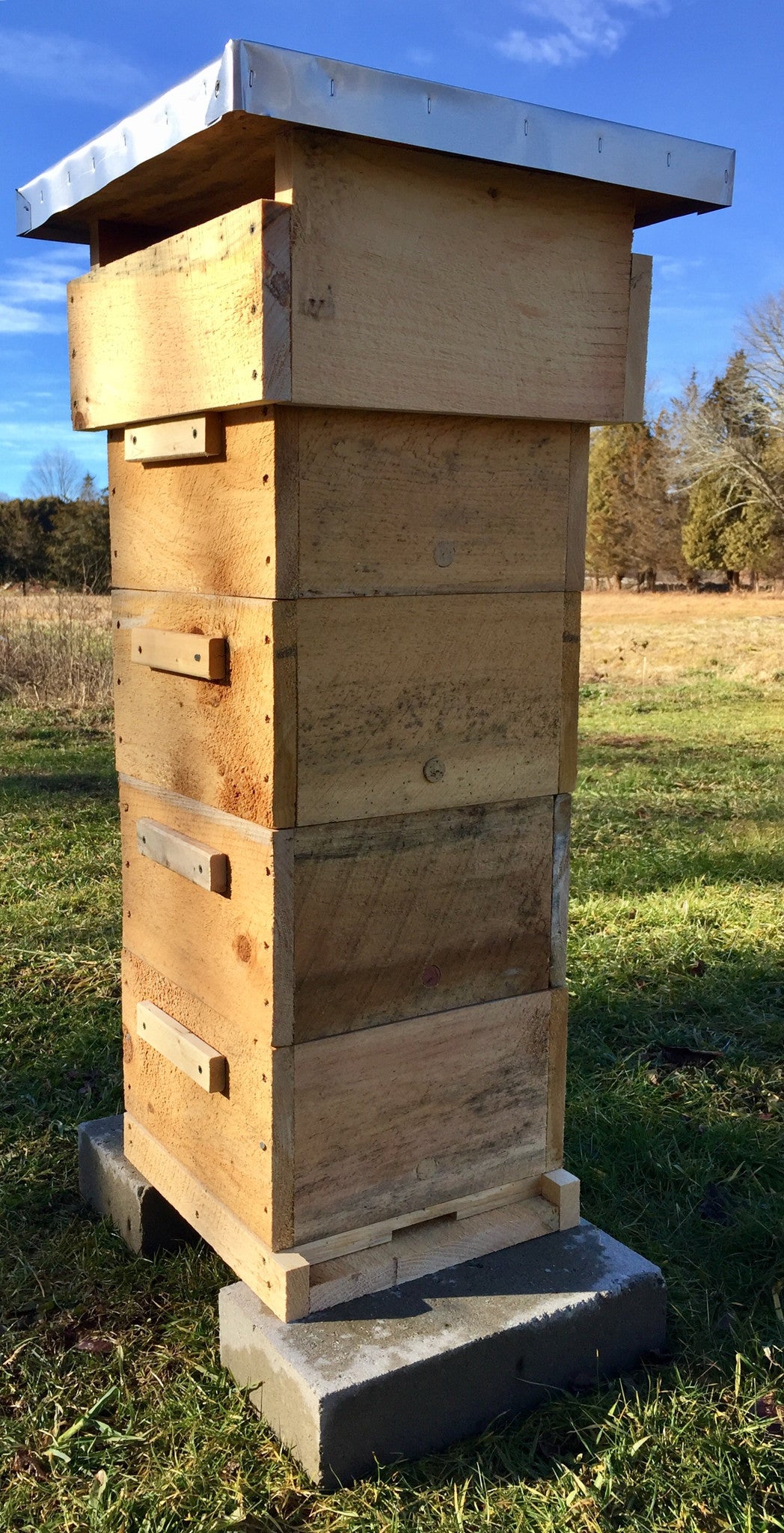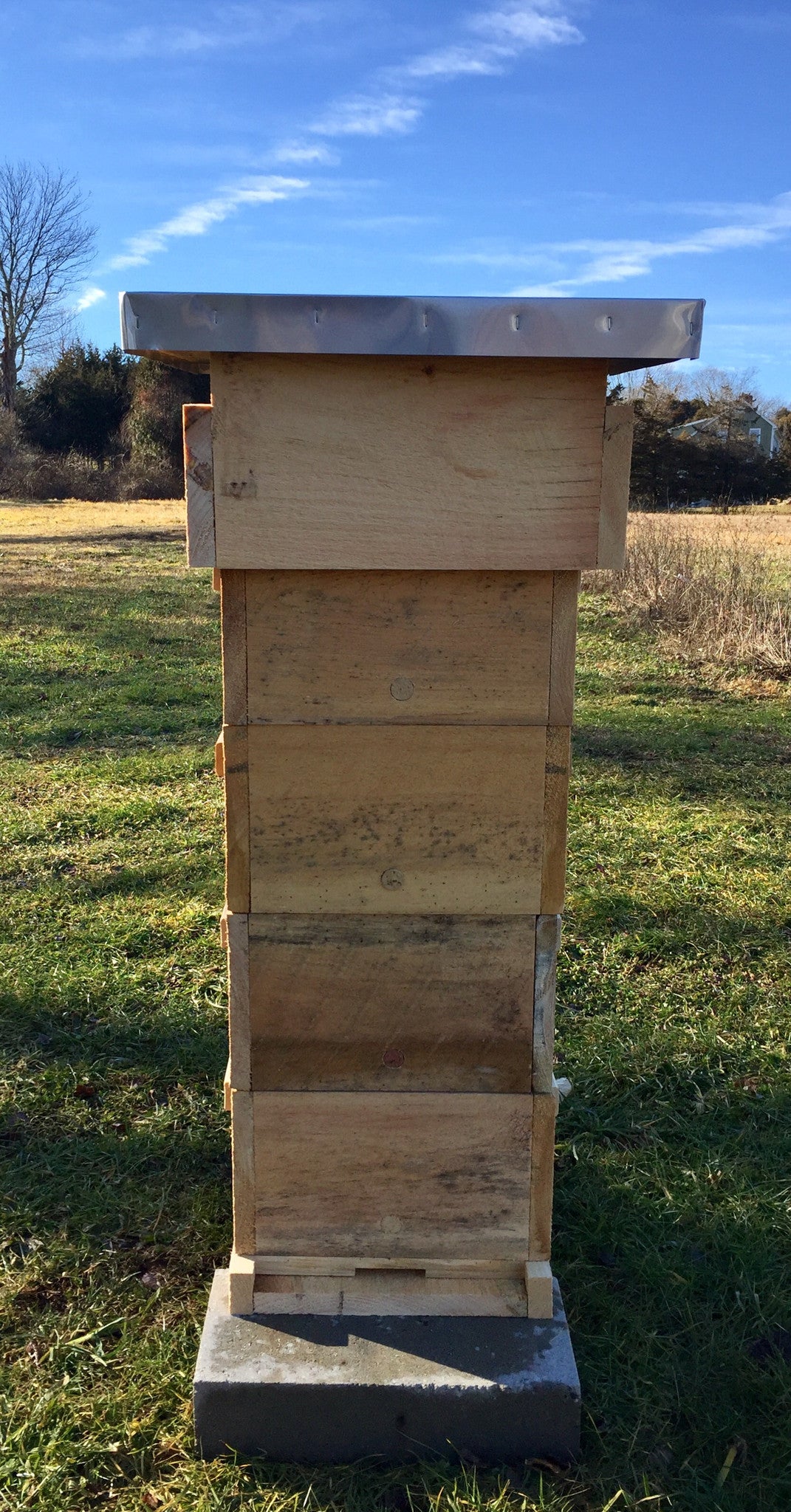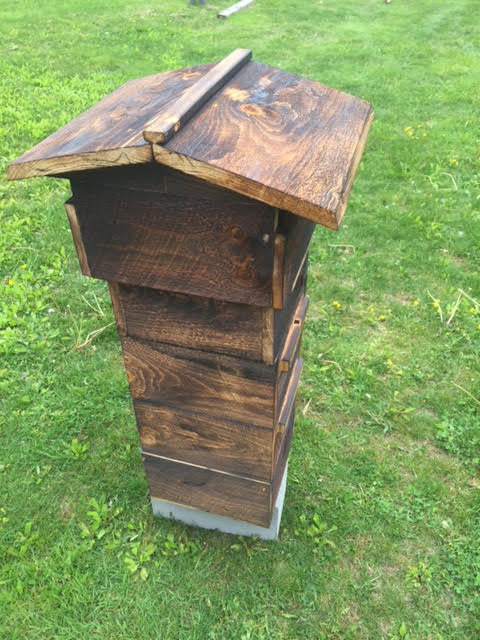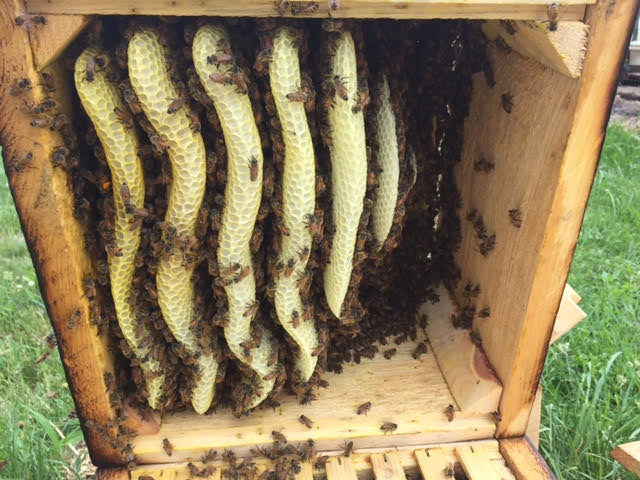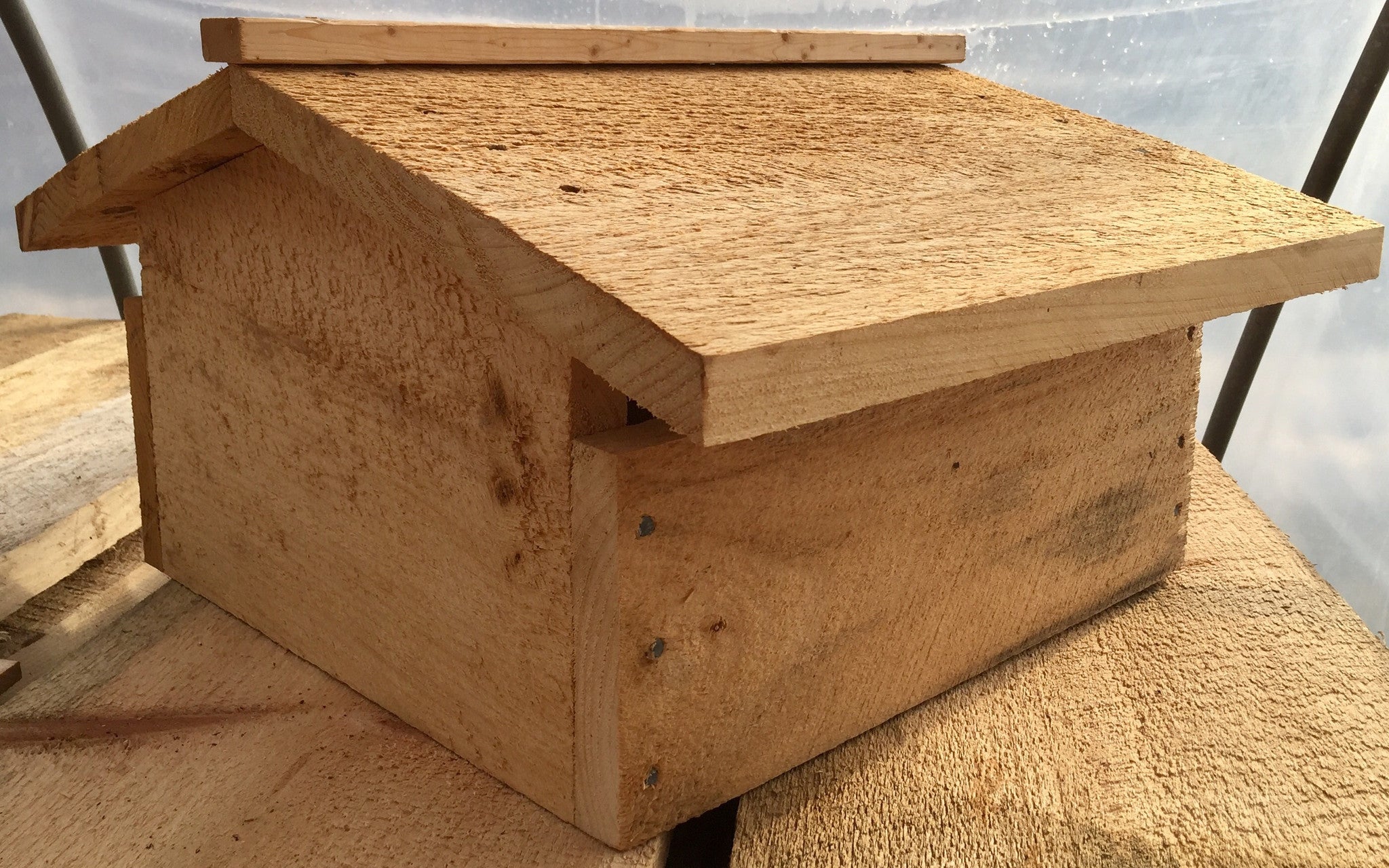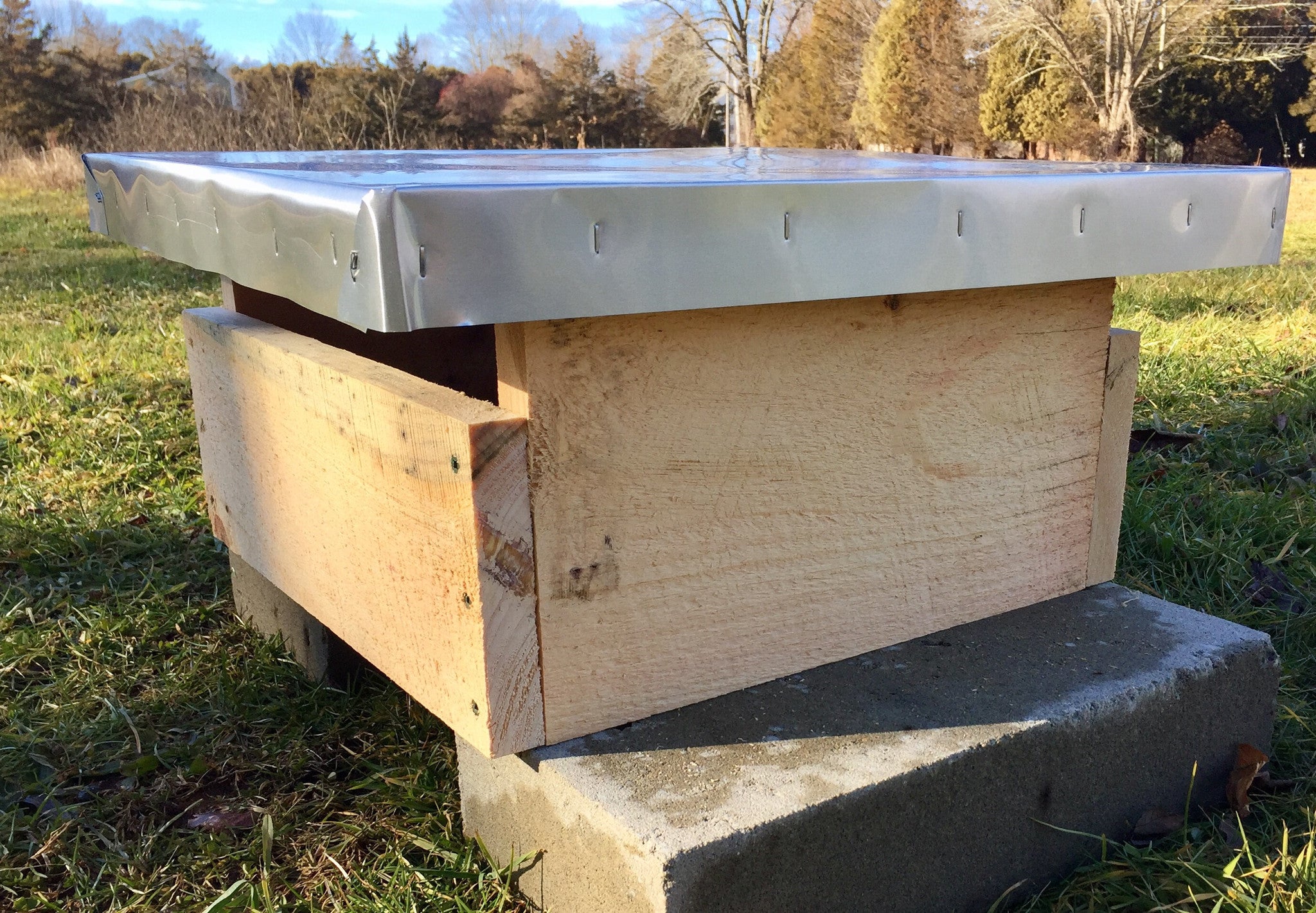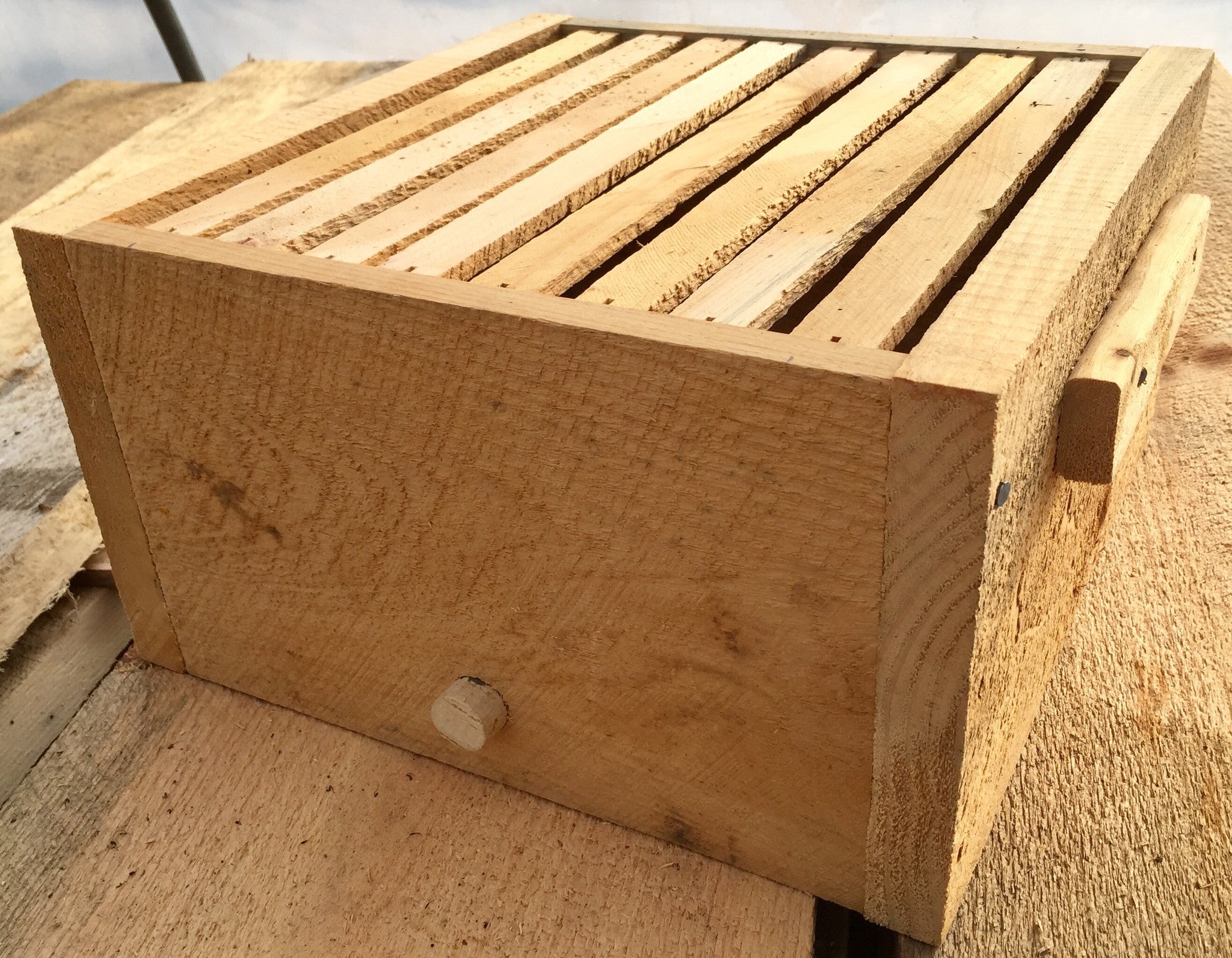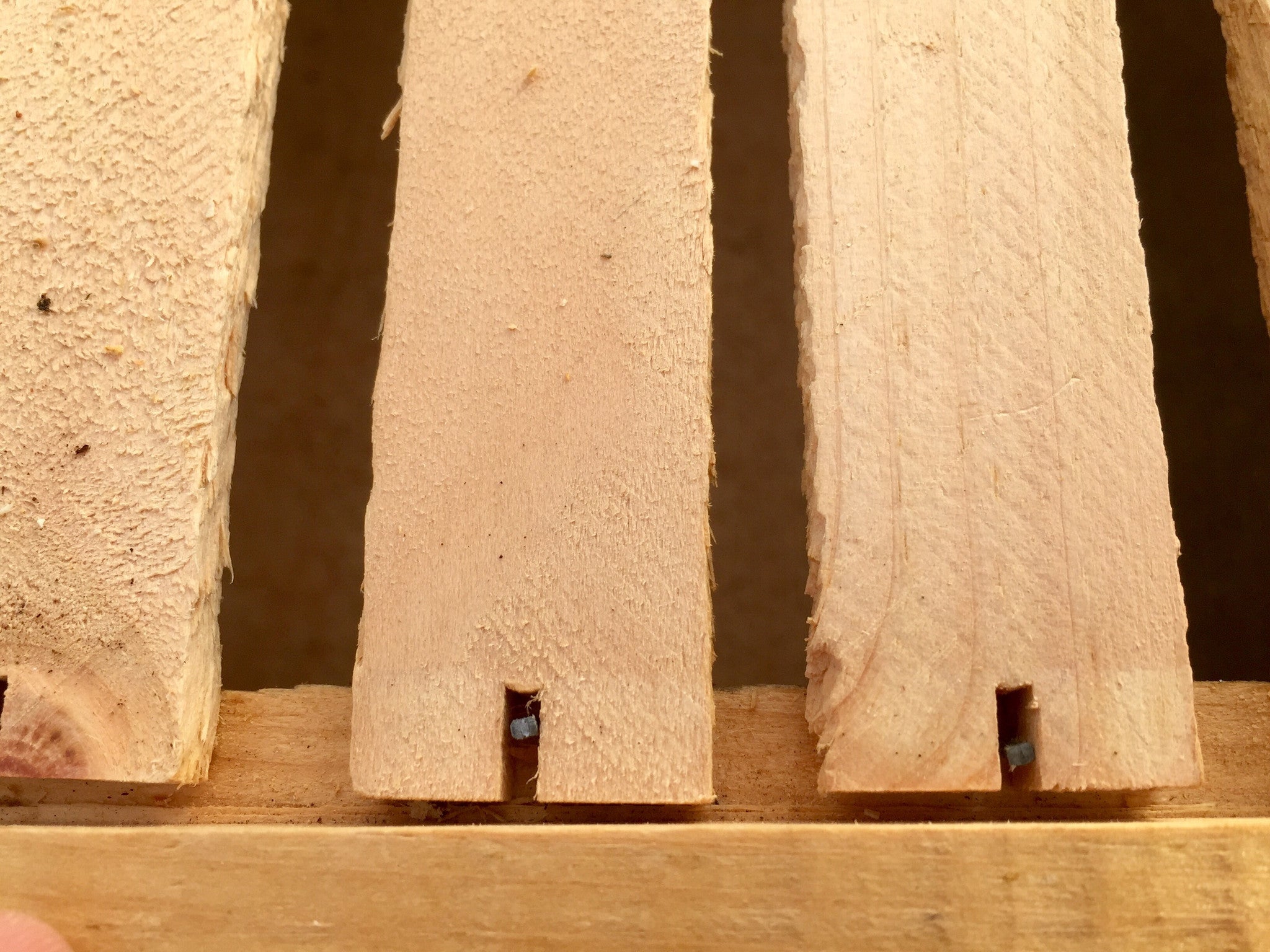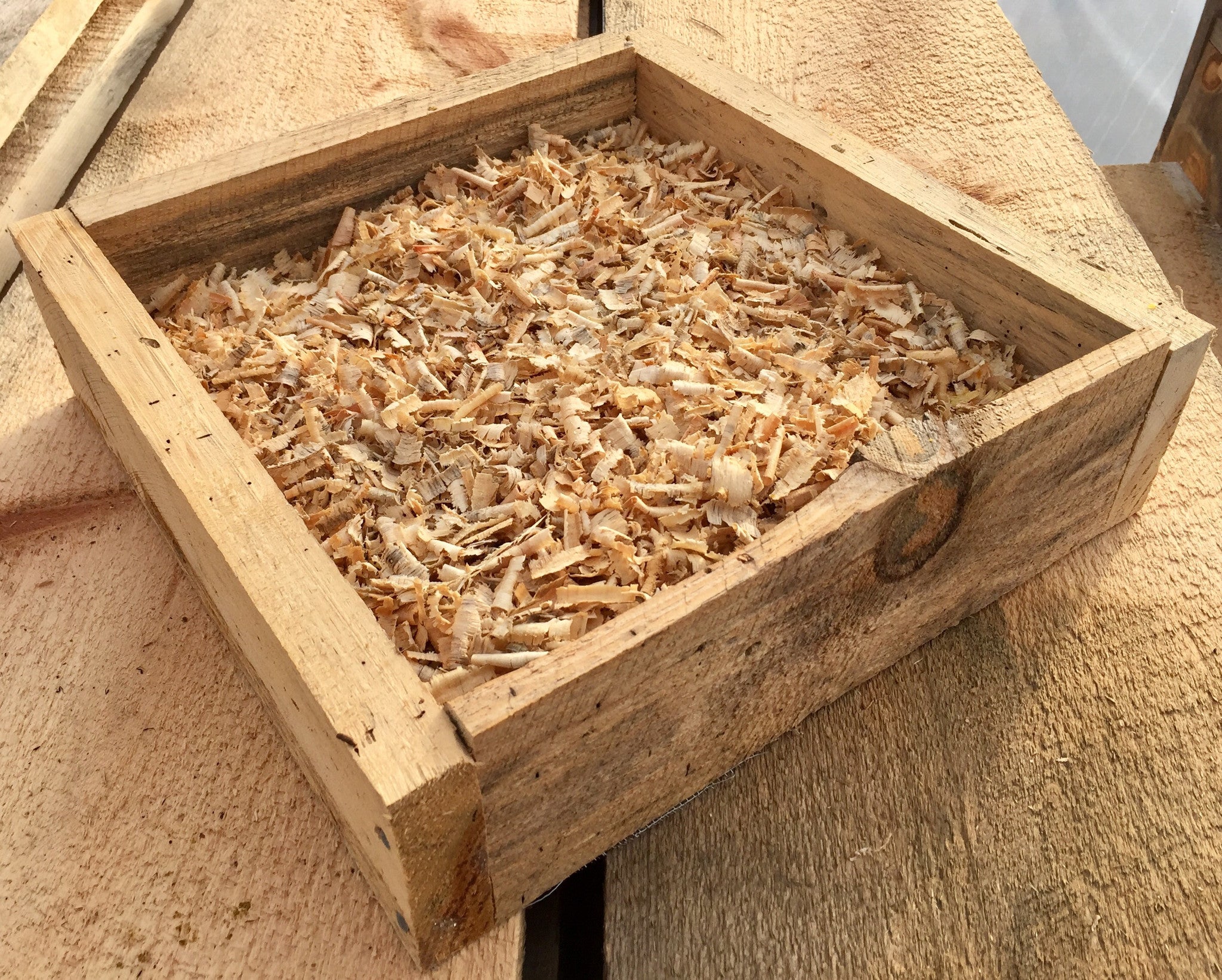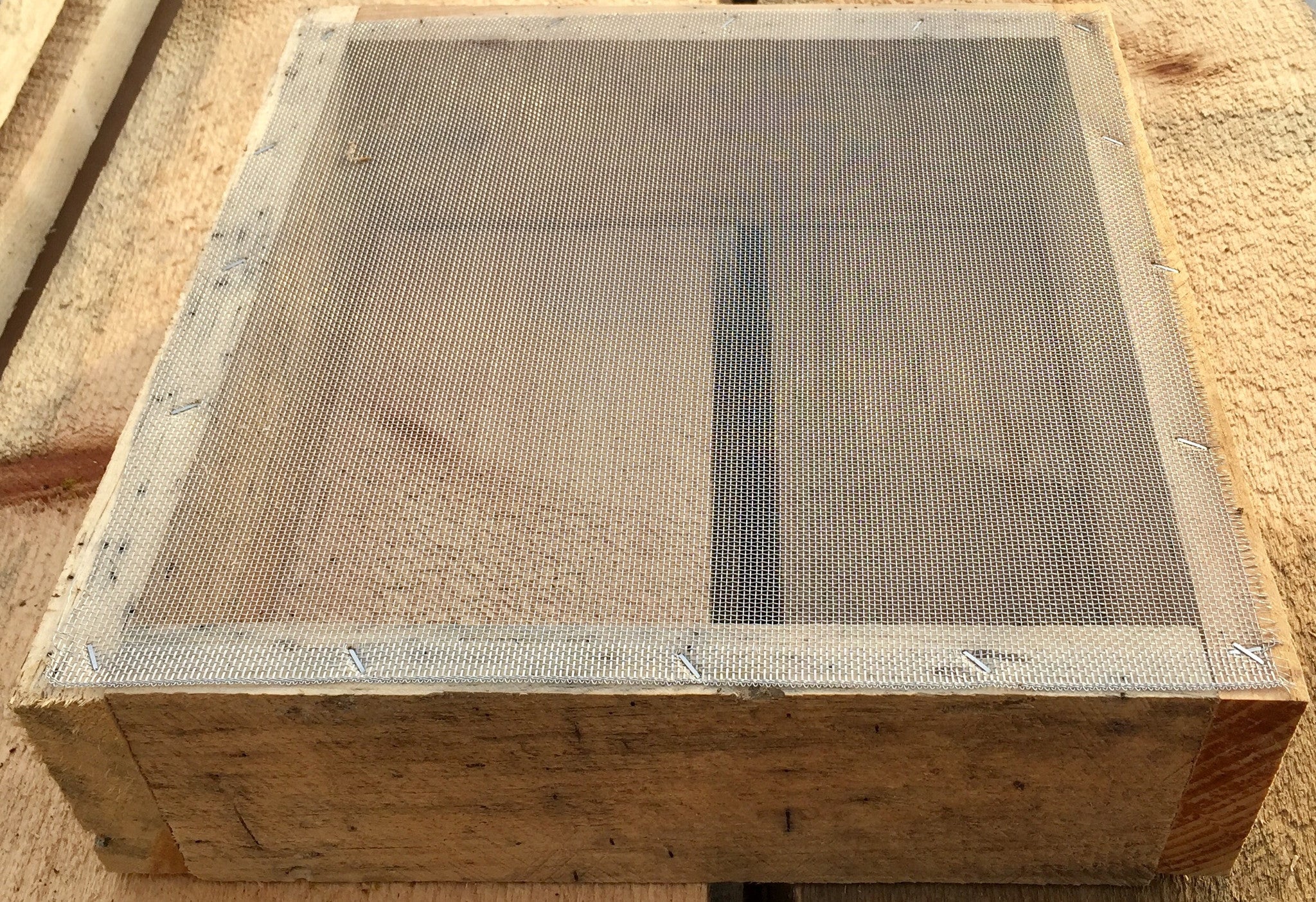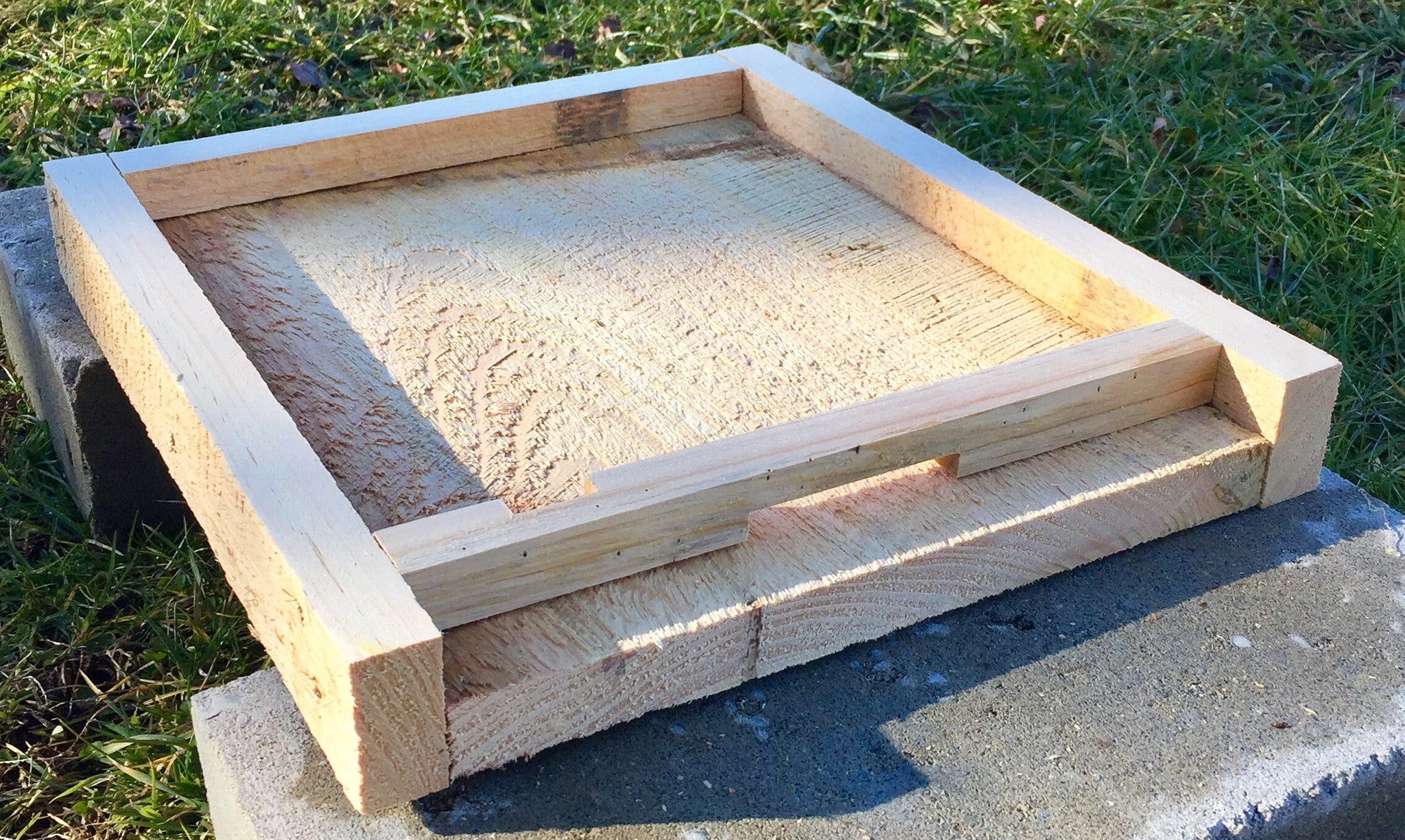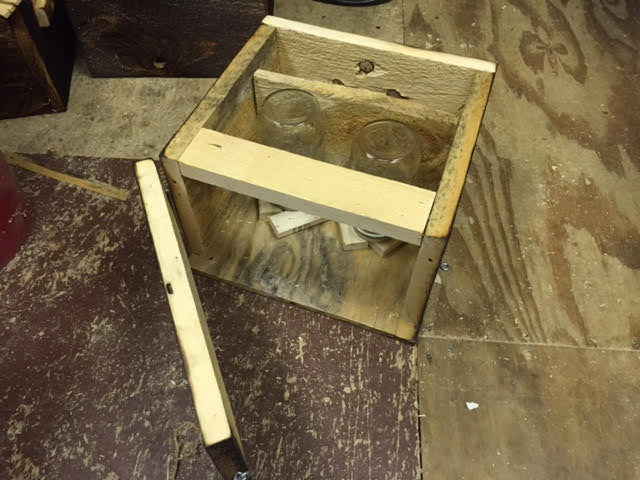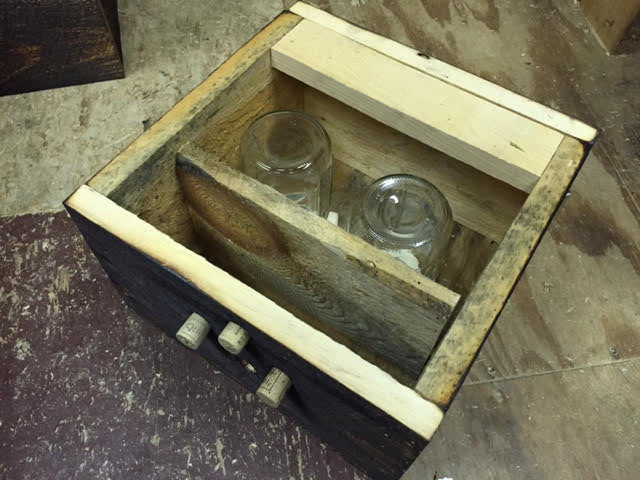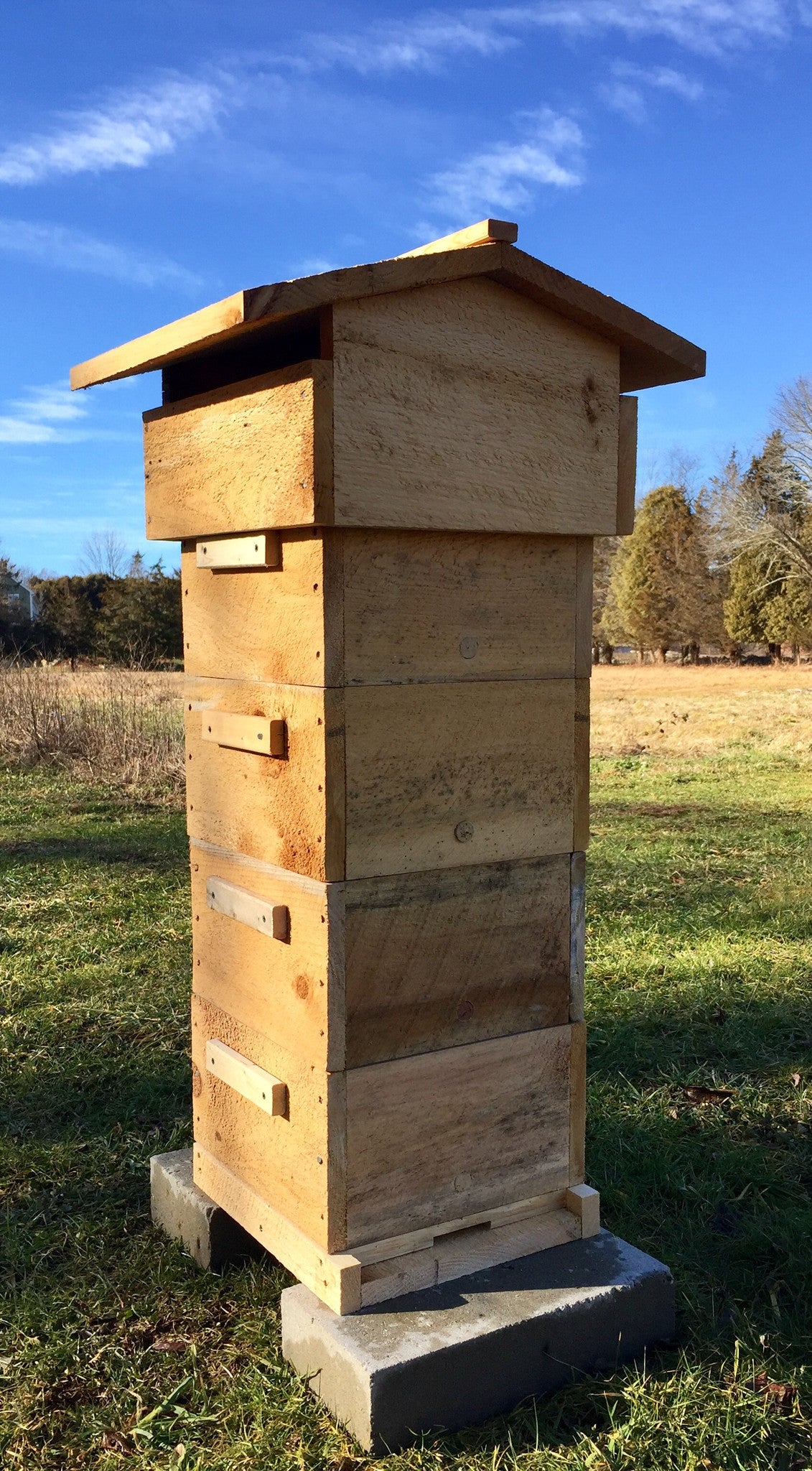
Tri Gable Lea Warré Complete Hive Kit
Important Update: As of 1/19/2025, our local 1”x12” lumber stock has run out. Your order may be built with 3/4” thick lumber from a different supplier. If this substitution is not acceptable and you prefer 1” thick lumber, please either wait to purchase or be aware that your order will take longer to process, with estimated completion date in summer 2025.
Note: most of these are sold locally with a free mini lesson & pick up by appointment. However, we now can ship these flat packed (unassembled) to the lower 48 states! Expect shipping to be between $150-200 per hive.
What is a Warré Hive?
Warré hives offer the bees a more-natural cavity to build their home. It's another hive that's designed around the needs of the bees. Man-made frames and wax foundations are typically not used in this style hive. Like Langstroth hives, boxes are added to increase the volume of the colony and removed one at a time for honey harvest. The bees build their comb down from the top bars, mostly straight, but often with whimsical curves that bees see fit to form. Rather than forcing the bees to fit man-made expectations, the bees build the comb cell sizes they need.
How does it work?
Warré hive boxes are narrower than most others hives. As they are stacked, they mimic the long and narrow cavities found in hollow trees that bees have evolved to live in. This means the bees build comb from the top down, like they would in a tree.
As they need more room, the beekeeper, adds boxes to the bottom of the stack (this is called "nadiring", instead of "supering" - adding boxes on top). Nadiring keeps the bees building downward.
As the year goes on and the brood nest moves further down the hive, the bees naturally back-fill the upper combs with honey. We suggest not harvesting honey from a new colony in their first year. As they need honey to survive the winter, they will cluster and move upward through the winter. When it is safe to take honey from the hive without starving the bees, you simply take it from the top of the hive. You can either cut out individual combs or take a whole box at a time for your own whole-comb honey (and wax to make salves, candles, etc.).
This process of taking the old comb from the top most boxes and adding new boxes to the bottom of the stack helps to cycle out old comb.
How do you set it up?
The beekeeper sets up their Warré hive by setting it level on a sturdy stand like concrete blocks. We like to use cinder blocks with the holes on their side.
Then they set either a low profile base or a feeding base down. The low-profile base keeps the center of gravity lower, reducing the likelihood of tipping. The feeding base is nice because it allows you to feed jars of syrup or patties and quickly open a door to swap out jars.
Next, the hive bodies/boxes and top bars are put on the base. We start with two boxes, installing a package of bees in the top-most box. Some start with all 4 boxes so they don't have to add them later. We don't mind teaming up to pick up the top boxes and add one box at a time as-needed in the season. A typical colony will fill about 3 boxes in it's first year. In later years, a robust colony may fill 8 or more boxes.
A top bar cloth is used on the top of the bars of the upper-most box only, to keep the bees out of the quilt box. The quilt box, with it's filling, is placed on the cloth, followed by the roof.
The combination of a ventilated roof and a quilt box helps to protect the colony. Natural breathable materials are used to insulate the quilt box. As warm moist air moves upward in the hive it is absorbed in the quilt material and eventually wicked away through the vented roof.
Or roofs are designed to fit completely over the quilt and the top bar cloth, keeping the rain out of them. The roof has ample ventilation and a gap that allows you to strap down the entire hive. We like to run a ratchet strap through the roof and the holes of the cinder blocks, tying the whole hive together. The standard gabled roof gives it a pleasurable aesthetic look in the garden. While the flat metal roof offers function, by placing the roof on the ground you have a surface to stack boxes during inspection.
After you get your hive, choose if you'd like to paint, stain to protect your hive’s wood from weathering and warping.
What does a standard hive come with?
4 Hive Bodies - Each body comes with two sturdy handles, 8 bars that are spaced with guide nails, and a pre-drilled & corked emergency entrance. 4 boxes are enough to run a colony for it's entire life.
1 Gabled Roof that fits snug over the quilt box & offers plenty of ventilation
1 Quilt Box with a screened bottom
1 base with entrance reducer
Most customers also get our NUC DOWN (our most popular add-on) - TRANSFER 5 FRAME LANGSTROTH NUC TO WARRÉ HIVE
